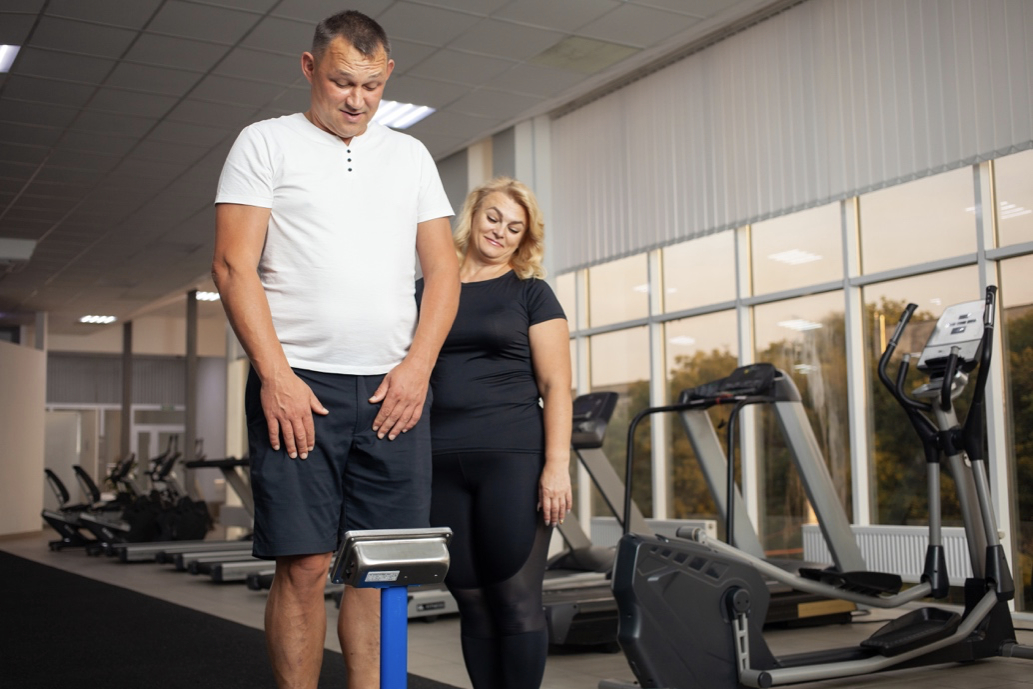For those considering a bariatric procedure like the Lap-Band® surgery, loose skin is a common concern. While usually a cosmetic preference, loose skin can also cause health problems, like chaffing, rashes, and, in extreme cases, infection. The idea of developing loose skin might be discouraging for some patients, but whether you develop loose skin during your weight-loss journey is partially dependent on the bariatric procedure you choose.
What causes loose skin after bariatric surgery?
When you gain weight, your skin stretches out to accommodate. During rapid weight loss, there is less fat to fill out the skin, which can result in sagging skin. Some post-bariatric surgery patients opt to have plastic surgery to remove their excess skin through a process called body contouring. However, they’re encouraged to wait at least a year after they’ve lost most of their weight, which allows the skin time to tighten naturally.
Why Lap-Band is different
During the Lap-Band procedure, an adjustable silicone band is placed around the stomach that can be tightened or loosened as your body or your physical needs change over time, helping to limit your food intake and promote your feeling of fullness. Post-surgery, Lap-Band patients lose weight gradually. Procedures like the gastric bypass result in rapid weight loss shortly after surgery, increasing the likelihood of excess skin. Because weight-loss is sustained over a longer period of time with the Lap-Band, there’s a lower chance of developing loose skin.
With the Lap-Band procedure, you may not experience loose skin, but it depends on other factors, as well. Your age helps determine your skin’s elasticity, which decreases as you get older. Your skin’s health also plays a role, as does the amount of weight you lose—more weight loss means a greater chance of excess skin.
Preventing loose skin after Lap-Band surgery
There are a few things you can do throughout your weight-loss journey to help discourage loose skin. First, focus on maintaining gradual weight loss to give your skin time to adjust. Post-surgery, your weight-loss team carefully designs your diet and exercise plan for healthy weight-loss, so be sure to follow your plan closely. Don’t over restrict your calories or over-exercise—aim for the healthy rate of losing 1-2lbs a week.
Second, emphasize skin health throughout your weight-loss journey. Proper hydration is important after Lap-Band surgery and drinking plenty of water also helps maintain your skin’s elasticity. Choose healthy foods that promote healthy skin, like fish and avocados, which contain healthy and beneficial fats. Other ways to prioritize skin health include wearing daily sunscreen, quitting smoking, and getting enough sleep.
Lastly, don’t neglect strength training in your exercise routine post-surgery. Building muscle helps fill out excess skin. Because the Lap-Band surgery is minimally invasive, it allows patients to recover and begin exercising quickly after surgery, but always check with your surgeon before you start strength training.
If you do have loose skin after Lap-Band surgery, plastic surgery is still an option. However, like other bariatric procedures, you should wait at least one year after you’ve lost much of your weight to decide if excess skin removal is right for you. To a certain extent, your skin will firm up naturally, but if you’re not satisfied with the results after a year, plastic surgery may be the right choice for you. It’s important to know that because body contouring is largely considered a cosmetic procedure, your insurance might not cover it unless the excess skin poses health risks.
If you’re looking for a weight-loss procedure that reduces your chance of loose skin, the Lap-Band may be right for you. Learn if you’re qualified by visiting our website, or find a surgeon in your area and take control of your weight loss today!


